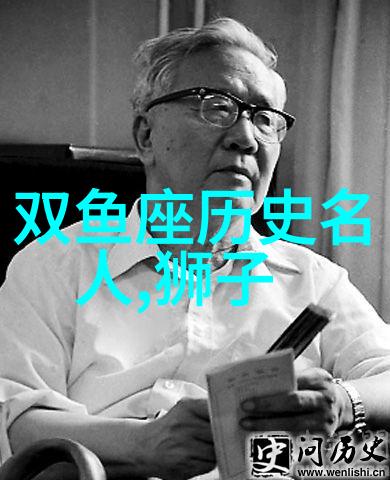
世界历史纪录片100集中的拜占庭帝国简介反复探索古代东方霸主的辉煌与衰落
《世界历史》纪录片100集中的拜占庭帝国简介:探索古代东方霸主的兴衰史

拜占庭(希腊语:Βυζάντιον,拉丁语:Byzantium)是一个古希腊城市,也是现今土耳其伊斯坦布尔的旧名,相传是从墨伽拉来的殖民于公元前667年建立的。在其上千年的存在期内,它一般被人简单地称为“罗马帝国”。
1、拜占庭帝国的基本概述

拜占庭帝国位于连结黑海到爱琴海之间的战略水道博斯普鲁斯海峡中陆。拜占庭帝国在七世纪中期达到极盛,此时它恢复了原先罗马帝国大部分领土,只缺少伊比利半岛(现在的西班牙、葡萄牙)、高卢(现在的法国)和英格兰。拜占庭掌握中东好几个世纪,但该帝国内部主要生存于巴尔干半岛和现代土耳其所组成的地理区域。
2、拜占庭首都君士坦丁堡

君士坦丁堡是由三堵牢固城墙和超过一千座塔楼防御于陆地一端。这座城市强大的海军保持了由海上而来的补给。君士坦丁堡在罗马帝国衰亡后屹立超过千年,保护欧洲免受波斯人的侵略、阿拉伯人的入侵以及后来土耳其人的征服。
3、行政制度与官僚体系

早期的拜占廷采取类似于罗马帝国的大型行政制度,其中包括元老院、大臣及各大区长官。在时间推移之下,这些职位逐渐演变为荣誉性头衔。皇帝辅弼机构为御前会议,其成员包括执事长官、大区总督、军队司令、高级法官等。此外,还有负责皇宫内部管理的人员,如私库长管辖着皇家财产,并监督整个国家经济活动。
4、高级法务与法律体系

拜占廷继承自古罗马的一套法律系统,并在查士丁尼一世统治时进行了一系列司法改革。他设立了最高法院并确保所有案件都将通过专业律师处理,而不是依靠权力或金钱。这也意味着要成为一个合格的大律师需要接受五年的专门培训,并且通过严格考试才能获得资格证书。
5、中世纪末期至灭亡
1204年四次十字军东征期间,一支十字军队伍进入君士坦丁堡并夺取了这座城市,将其作为自己的王国之一,即小亚细亚公国。而此同时,其他地方则被塞尔柱突厥控制,这标志着拜占廷作为一个独立政体走向终结。
6、新天鹅绒朝对抗奥托曼 empire
在14th century, the Byzantine Empire was ruled by the Palaiologos dynasty. They fought against the Ottoman Empire and tried to regain control of their lost territories. However, they were ultimately unable to stop the Ottomans' advance.
7., 1453年奥托曼 conquests
The final blow came in 1453 when Constantinople fell to the Ottoman Turks under Mehmed II. This marked the end of the Byzantine Empire and its capital city became known as Istanbul.
8., Legacy and influence
Despite its eventual decline and fall, the Byzantine Empire had a significant impact on European culture, art, architecture, law, politics and religion. Many aspects of modern society can trace their roots back to this ancient civilization.
9., Timeline:
- 330 AD: Constantine establishes Constantinople as his new capital.
- 395 AD: Roman Emperor Theodosius I divides Roman Empire into Eastern (Byzantine) and Western halves.
- 527-565 AD: Justinian I reigns over a period of relative peace and prosperity.
- 867-1056 AD: Macedonian Renaissance sees a resurgence in art, literature, architecture etc.
- 1081-1180 AD: Komnenian dynasty rules with military successes but also internal conflicts.
- 1204 AD: Fourth Crusade leads to Latin occupation of Constantinople for nearly six years before it is reclaimed by Alexios IV Angelos.
- Aftermath of Fourth Crusade leads to increased power struggle among nobles which weakens empire further leading up to its downfall at hands of Ottomans in late fourteenth century.
10., Conclusion:
The Byzantine Empire's rich history is filled with moments that shaped not only Europe but also much broader regions including Asia Minor (modern-day Turkey), North Africa (Egypt), Balkan Peninsula (present-day Bulgaria), Greece etc. Its legacy continues through various cultural artifacts like icons or frescoes found within churches & monasteries across Eastern Orthodox world; architectural styles such as domes atop churches; legal codes derived from Justinian Code influencing civil law systems worldwide today; political structures influenced by imperial models established during this era; religious practices evolving outwards from early Christian beliefs rooted within these lands – all testaments testamentary testimonial testamentamentary testamentary testimony testify testimony testimonial testimony testify testify testify testimonial testimonial testified testified testified tested tested testing testing tested tests testifying tester testers testers tester testers testers tester testering testing testerestestingtestingtestedtestedtestingtestingtestedtestedtestestedtesttedtetedstedstedstedstettedsttttttettttttetettetetetteeeteedeeeeteedeeeedededededdedddddeeeedevedeeeeeeveeeeeveeeeeveevvvvvvvddeeeeeeveddddeeeeeeedddeeveddddeeveddddeedddeevehhhhhhheehhhheehehhehhheeheehehheheeHeeHeeHHeHhEHEHHHHEEEEEEHHHHHHEEEEEEEEEEEEEEEEE



